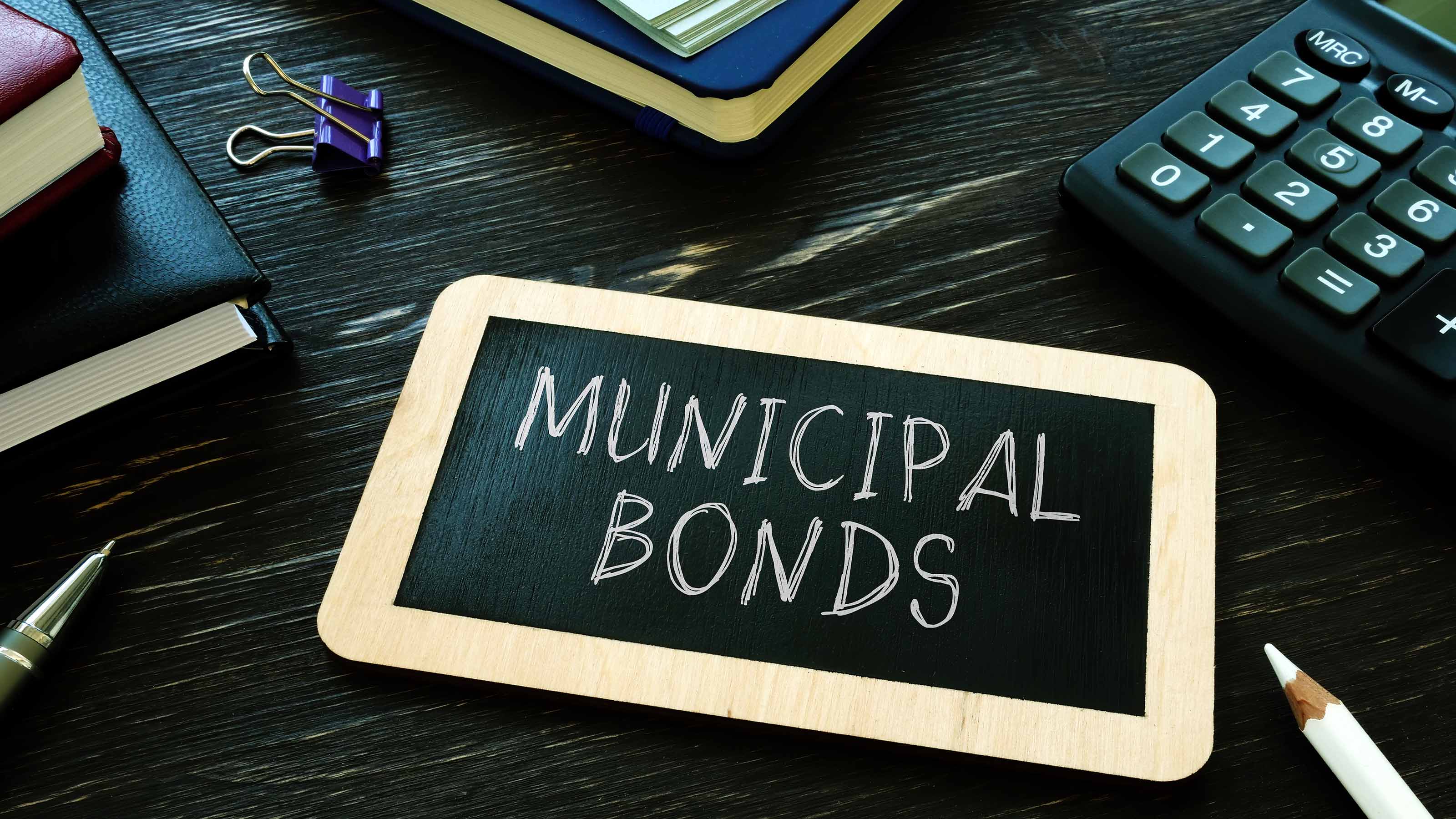The Tax-Exempt Train Rolls On
A powerful force is propping up munis in 2021: U.S. prosperity.


The obvious source for positive returns in bonds during 2021's robust economic recovery is high-yield, or junk, a category always known to piggyback on rollicking growth and booming oil prices.
But as usual, and despite the uptick in interest rates and all the apprehensions that inflation is about to stay stubbornly higher, tax-exempt bonds are also in the green. I like to say municipals are steely stuff. I am on the verge of upgrading them to titanium.
The numbers for 2021 are not spectacular. A clutch of broad-based municipal indexes is up 0.5% to 1%, exemplified by Standard & Poor's state general obligation index, at 0.6%. But its three-year annualized gain is 4.5%, and Vanguard's benchmark Total Bond Market ETF (BND) is at minus 2.4% for the year to date – hurt by its lack of tax-frees. (Prices and returns are through June 4.)
From just $107.88 $24.99 for Kiplinger Personal Finance
Become a smarter, better informed investor. Subscribe from just $107.88 $24.99, plus get up to 4 Special Issues

Sign up for Kiplinger’s Free Newsletters
Profit and prosper with the best of expert advice on investing, taxes, retirement, personal finance and more - straight to your e-mail.
Profit and prosper with the best of expert advice - straight to your e-mail.
Municipals' prices are not nearly as sensitive to interest-rate bumps as are Treasuries or corporate bonds. There is less trading, and more municipal bondholders stay put until maturity, so the prices are stickier until and unless rates seriously soar.
And the perception now is that high-income investors are due for big income tax increases, so they are frantic for shelters, and tax-free bonds are easy to buy. (For more on tax-wise investing, see How to Invest for a Higher-Tax Future.)
But tax-policy talk is always a questionable explanation for municipal bonds' success.
I have found that people just do not want a tax liability when it is optional. It does not matter whether their personal tax rate is low, they live in a tax-haven state, or Congress puts them into a combined 50% state and local bracket.
It also does not matter whether the yield on tax-frees is unusually low compared with what is available from taxable debt – which it is now, with triple-A muni yields at near-record lows relative to 10-year Treasuries. In some asset classes, this would trigger a burst of profit-taking and rebalancing. Not here. Repeat after me: Folks. Just. Hate. Taxes.
Prosperity is a Plus
There is another powerful force propping up munis in 2021: U.S. prosperity. Treasury bonds gain in value when banks, pension funds, foreign nations and other giant investors seek maximum safety and soundness; municipal bonds' good fortunes reflect healthy employment and consumer spending, robust business activity, and rising real estate sales and property values.
Hence, the S&P Infrastructure Plus tax-free index is up 2.3% so far this year – four times the gain in the index of state general obligations. Airport bonds are ahead 2.1%; hospital bonds, 1.9%; and toll-road bonds, 1.7%. Almost none of these bonds fell apart in value or missed payments a year ago, helped by sizable cash reserves.
Fitch Ratings did put the Pennsylvania Turnpike and the South Jersey Transportation Authority on negative watches – but has now removed them. Fitch forecasts U.S. toll-road traffic to get back to 2019 levels by the fourth quarter of this year. It may need to advance that target.
As for income, in April 2021, New Jersey Turnpike toll revenue exceeded April 2020's depressed take by 203%. There is a reason these are called revenue bonds.
Few mutual funds are devoted specifically to revenue bonds, but high-yield portfolios including the incomparable Nuveen High Yield (NHMAX, yield 4.6%) have a heavy share of them. The Nuveen fund has a year-to-date total return of 6.3%.
Closed-end BNY Mellon Municipal Bond Infrastructure Fund (DMB, $15, 4.3%) has returned 7.3% so far in 2021. After spending years at a discount, it now trades at net asset value – a fair price.
I've recommended these funds for years, but it's still not too late to buy.
We're climbing out of the economic shock of a lifetime, and nothing terrible happened to bond investors. Better times are rolling. Enjoy the ride.
Profit and prosper with the best of Kiplinger's advice on investing, taxes, retirement, personal finance and much more. Delivered daily. Enter your email in the box and click Sign Me Up.

Kosnett is the editor of Kiplinger Investing for Income and writes the "Cash in Hand" column for Kiplinger Personal Finance. He is an income-investing expert who covers bonds, real estate investment trusts, oil and gas income deals, dividend stocks and anything else that pays interest and dividends. He joined Kiplinger in 1981 after six years in newspapers, including the Baltimore Sun. He is a 1976 journalism graduate from the Medill School at Northwestern University and completed an executive program at the Carnegie-Mellon University business school in 1978.
-
 How We Manage Our Finances Together: 'When You Keep Score, You Can End Up Resentful'
How We Manage Our Finances Together: 'When You Keep Score, You Can End Up Resentful'Douglas Boneparth, a certified financial planner, and his wife, Heather Boneparth, speak with Kiplinger about couples managing finances.
-
 I'm 45 and I've barely invested in the stock market. I recently inherited $50,000. What should I do?
I'm 45 and I've barely invested in the stock market. I recently inherited $50,000. What should I do?What should you do with a big inheritance? We asked a financial expert for advice.
-
 A Contrarian Approach Pays Off for This Bond Fund
A Contrarian Approach Pays Off for This Bond FundThe Dodge & Cox Income Fund has outperformed in 2025 thanks to its managers' fearless approach.
-
 Best Mutual Funds to Invest In for 2026
Best Mutual Funds to Invest In for 2026The best mutual funds will capitalize on new trends expected to emerge in the new year, all while offering low costs and solid management.
-
 What Fed Rate Cuts Mean For Fixed-Income Investors
What Fed Rate Cuts Mean For Fixed-Income InvestorsThe Fed's rate-cutting campaign has the fixed-income market set for an encore of Q4 2024.
-
 The Most Tax-Friendly States for Investing in 2025 (Hint: There Are Two)
The Most Tax-Friendly States for Investing in 2025 (Hint: There Are Two)State Taxes Living in one of these places could lower your 2025 investment taxes — especially if you invest in real estate.
-
 The Final Countdown for Retirees with Investment Income
The Final Countdown for Retirees with Investment IncomeRetirement Tax Don’t assume Social Security withholding is enough. Some retirement income may require a quarterly estimated tax payment by the September 15 deadline.
-
 Smart Ways to Invest Your Money This Year
Smart Ways to Invest Your Money This YearFollowing a red-hot run for the equities market, folks are looking for smart ways to invest this year. Stocks, bonds and CDs all have something to offer in 2024.
-
 Vanguard's New International Fund Targets Dividend Growth
Vanguard's New International Fund Targets Dividend GrowthInvestors may be skittish about buying international stocks, but this new Vanguard fund that targets stable dividend growers could ease their minds.
-
 Best 401(k) Investments: Where to Invest
Best 401(k) Investments: Where to InvestKnowing where to find the best 401(k) investments to put your money can be difficult. Here, we rank 10 of the largest retirement funds.
-
 7 Best Stocks to Gift Your Grandchildren
7 Best Stocks to Gift Your GrandchildrenThe best stocks to give your grandchildren have certain qualities in common. Here, we let you know what those are.